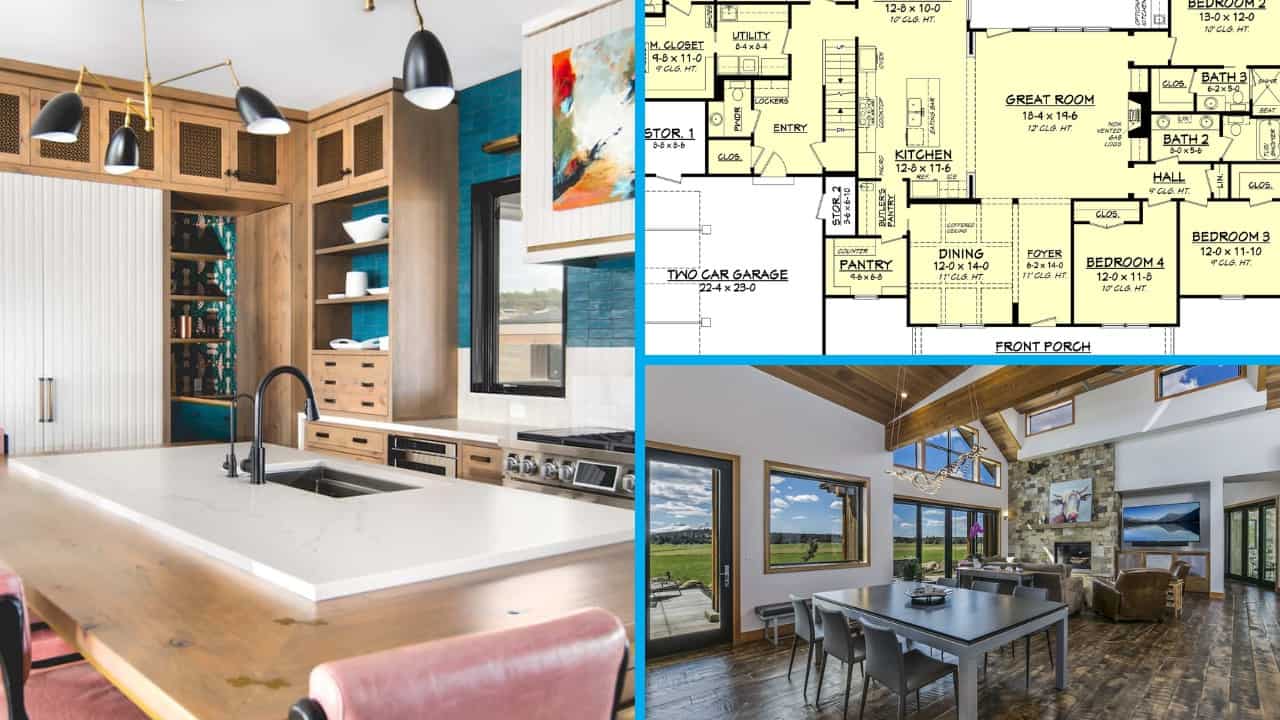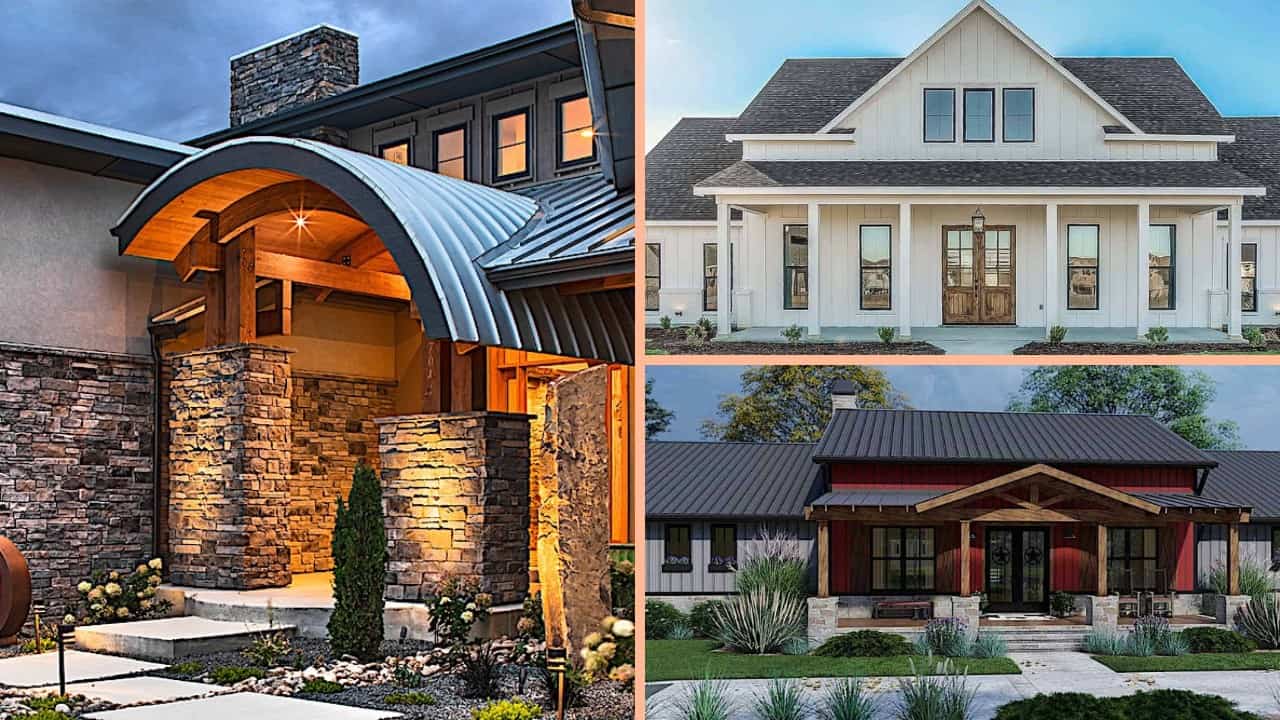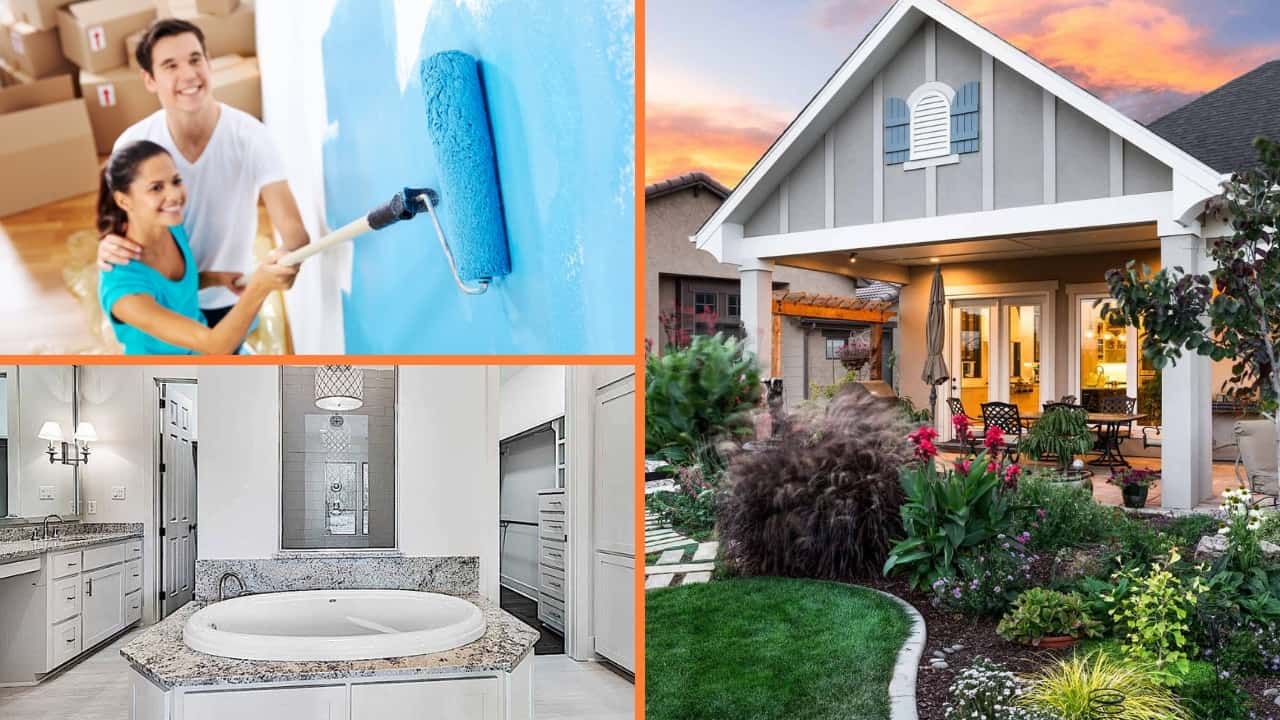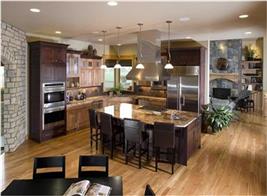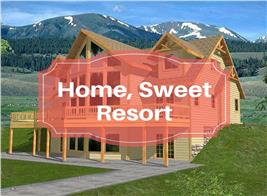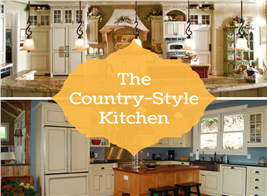4 Steps to a Long-Lasting Exterior Paint Job
By Ann Adamson | Updated May 17, 2022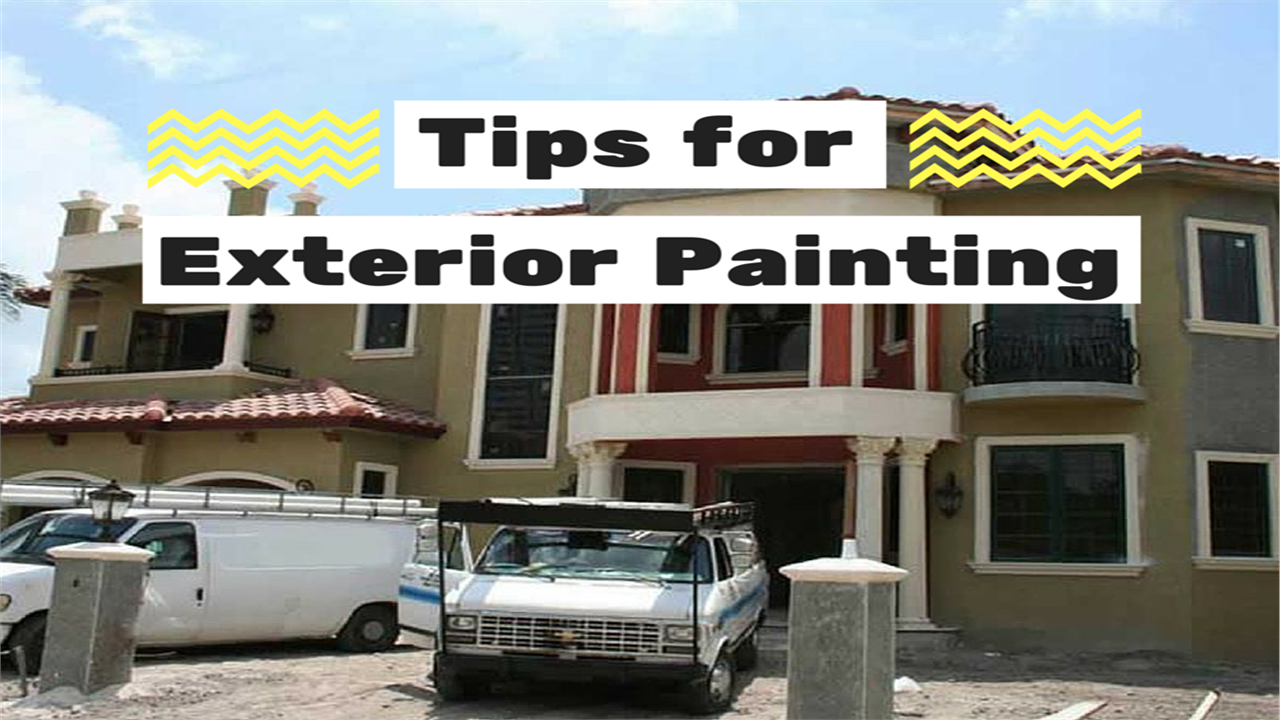
Many of today’s house plans don’t require much painting once built, what with stone, brick, and vinyl exterior siding, which are popular these days. But there are areas like door and window trim, deck or porch railings, and roof trim that may need painting. And some house plan styles, especially Victorian, which may use many different colors in the exterior décor, and Tudor, with different colored timbers and stucco, may need to be painted to look right.
If exterior painting is on your summer to-do list, there’s plenty of incentive to do the job right: By following proper procedures, you’ll help ensure that your paint job will not only look more attractive but also last much longer, so you won’t have to re-paint anytime soon.
So what are the keys to a great-looking, long-lasting paint job? Debbie Zimmer, paint and color expert at the Paint Quality Institute, says it’s important that you do four things:
1. Prepare the surface properly. A professional-looking paint job always begins with good surface preparation. The surface should be clean and sound, free of dirt, mildew, and loose, flaking, or peeling paint. Areas that are bare – because they are unpainted or because the paint has worn off – should be primed with a top-quality exterior primer before they are painted.
-
New, unpainted wood. Remove dirt and other contaminants (if present) by washing with soapy water. If mildew is present, apply a solution of one part bleach to three parts water, allow the solution to sit for 20 minutes, then scrub clean. Sand and spot-prime knots and other surface imperfections. Complete the job by applying a coat of primer to the entire surface.
-
Previously painted wood. Remove all loose, peeling, or flaking paint with a scraper or wire brush, then sand any rough edges that remain. Dull any glossy painted areas with sandpaper and spot-prime those that have no paint at all. Brush off any remaining dust particles. If mildew is present, remove it as described above.
-
New, unpainted metal. Remove any loose paint or rust with a scraper or wire brush, then wash the surface with soap and water, and rinse clean. Apply metal primer to help the paint adhere better, and paint quickly, before new rust begins to form.
-
Previously painted metal. Remove loose or peeling paint with a scraper and/or sandpaper, then sand any glossy areas to a dull finish. If needed, use a bleach solution to remove mildew. Next, wash the surface and wipe clean. Prime areas where any bare metal is exposed.
-
Unpainted masonry, stucco, brick, or cement. Clean thoroughly with soap and water, and if necessary, use a wire brush to remove loose material. Treat weathered, very porous surfaces with a masonry conditioner before applying alkali-resistant 100% acrylic latex paint.
-
Previously painted masonry, stucco, brick, or cement. Remove loose or peeling paint using a scraper or wire brush. If heavy “chalk” is present, remove that also using a wire brush. Wash the surface clean. On very porous surfaces, apply a masonry conditioner prior to painting.
2. Use high-quality brushes and rollers. Quality tools and accessories make painting more effortless and apply a thicker, more uniform coat of paint, which in turn enhances its durability. If you choose to speed your work by using power washing and spray equipment, be sure to follow the manufacturer’s recommendations.
3. Apply top-quality paint. The highest quality paints adhere better, are far more flexible (to withstand expansion, contraction, or other movement in the exterior), and contain special additives to resist mold and mildew formation. That makes them much more durable than ordinary paints. In most cases, the best choice is a top-quality 100% acrylic latex paint.
4. Paint in the right weather conditions. It’s best to do exterior painting in mild weather, ideally when the temperature is between 60 and 85 degrees F., with little or no wind. Paints form the most protective coating in this type of weather.
Some Background on Exterior Paint
Historically in the United States homes have gone through a myriad of trends insofar as exterior façade colors (and materials) much of which is based on cultural regions, weather, and raw materials available.
Before the Revolutionary War, American homes were not usually painted since they were built of clapboard and shingles made out of high quality eastern white cedar, oak and pine – woods that held up well against insects and the weather. In the early 19th century, the world had a limited selection of color choices for paint. Colonial homes tended to be painted in deep, earth-based hues such as brown, yellow ochre, charcoal gray, and barn red and gray-green. Off white color was used for siding and trim.
Up until today, the exterior paint on American homes was not so varied, nor were the formulations very complex. Paints used to be made from just three ingredients: linseed oil binder, a turpentine vehicle, and a pigment, typically white lead. There was a lack of chemically produced pigments, which were costly.
In 1856 synthetic organic pigments were developed, making dyes more readily available, and paint development began to expand, giving consumers more options. However those pigments that were affordable and the most stable came from natural, organic substances including red iron oxide, lamp black, or colored clays. The well-known exterior paint color called Spanish brown was made from a reddish-brown pigment from red iron oxide which was very popular in 18th century homes.
By the 20th century there were a number of chemical advancements including a substitute for white lead, titanium dioxide, as well as paint color mixing which was developed for in-store use in the 1960s, enabling people to get custom colors.
Now there is a wide spectrum of exterior colors from white and tinted neutrals to bright hues of many colors. Monochromatic color tints and various shades of one hue with contrasting siding and trim provide an additional way to achieve the earth-toned look.
When it comes to your new home plan, if you are unsure of what exterior paint colors use, take a look at pictures of exterior paint colors in the home magazines and paint manufacturer catalogs to get an idea of what style you would like use.
As you can see, it isn’t difficult to get a beautiful and durable exterior paint job, as long as you go about things in the right way. So follow this expert advice, and use these four keys to unlock the perfect exterior paint job on your home. Share your painting experiences in the comments section below.



